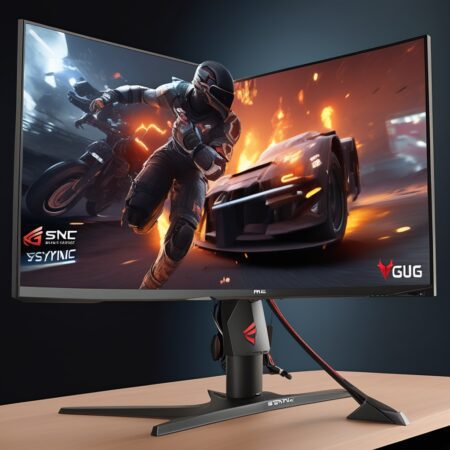When it comes to LCD displays, one common issue that can sometimes catch the eye of users is backlight bleed. But what exactly is backlight bleed, and how does it affect your viewing experience? In this comprehensive guide, we’ll delve into the depths of backlight bleed, its causes, and potential remedies.
What is Backlight Bleed?
Backlight bleed can be defined as the phenomenon where light leaks around the edges or corners of an LCD display. This issue arises from the fundamental way in which LCD displays operate. They utilize a backlight situated behind the liquid crystal display panel, and backlight bleeding essentially refers to some of this light seeping through.
Your LED LCD, whether it’s a television or a computer monitor, utilizes LED backlighting to create the images you see on the screen. However, due to the inherent characteristics of this technology, some of the light may not get entirely blocked around the display’s bezels, resulting in backlight bleeding.
Typically, minor backlight bleeding is expected and, in most cases, tolerable since it’s often imperceptible during regular usage. However, in some instances, the backlight bleed can be noticeable and distracting. In such cases, you might have options to address the issue, depending on the manufacturer’s return policy.
Types of Backlight Bleed
Backlight bleeding primarily occurs along the edges of the screen, but it can manifest in different forms:
- Edge Bleeding: This is the most common form, often referred to as the ‘batman’ logo pattern. It’s typically visible in dark scenes and not noticeable during regular content viewing.
- Flashlighting: As the name suggests, this looks like someone is shining a flashlight at the screen, creating bright patches at the corners of the display.
Addressing Backlight Bleed
If you find that you’re experiencing excessive backlight bleeding and it’s interfering with your viewing experience, consider the following steps:
- Return or Replace: First, check with the manufacturer’s return policy. If the backlight bleed is too severe, you may be eligible for a return or a replacement.
- Unconventional Methods: In some cases, users have attempted unconventional approaches to mitigate backlight bleed, such as:
- Dismantling the display and applying electrical tape around the edges of the LCD.
- Slightly loosening screws at the rear of the display, which can help reduce flashlighting.
- Gently rubbing the area with backlight bleeding using a microfiber cloth to reduce backlight clouding.
- Reducing screen brightness until the bleed becomes unnoticeable.
- Enabling local dimming if your display supports this feature.
- Consider Display Technology: If backlight bleed remains a persistent issue and significantly affects your viewing experience, consider switching to a display technology, such as OLED panels, which are less prone to backlight bleed.
IPS Glow vs. Backlight Bleed
For those with IPS-panel displays, it’s essential to differentiate between backlight bleed and IPS glow. Unlike backlight bleed, the intensity of IPS glow can be reduced by adjusting your viewing angle, screen brightness, or by adding bias lighting behind the display.
In conclusion, while backlight bleed is an inherent characteristic of LCD displays, its impact can vary. Understanding the types and causes of backlight bleed, as well as potential remedies, can help you make informed decisions about your display and ensure an optimal viewing experience. If you ever encounter persistent backlight bleed issues that affect your display’s performance, it’s worth exploring alternative display technologies that may offer a more satisfying solution.





























































































































































